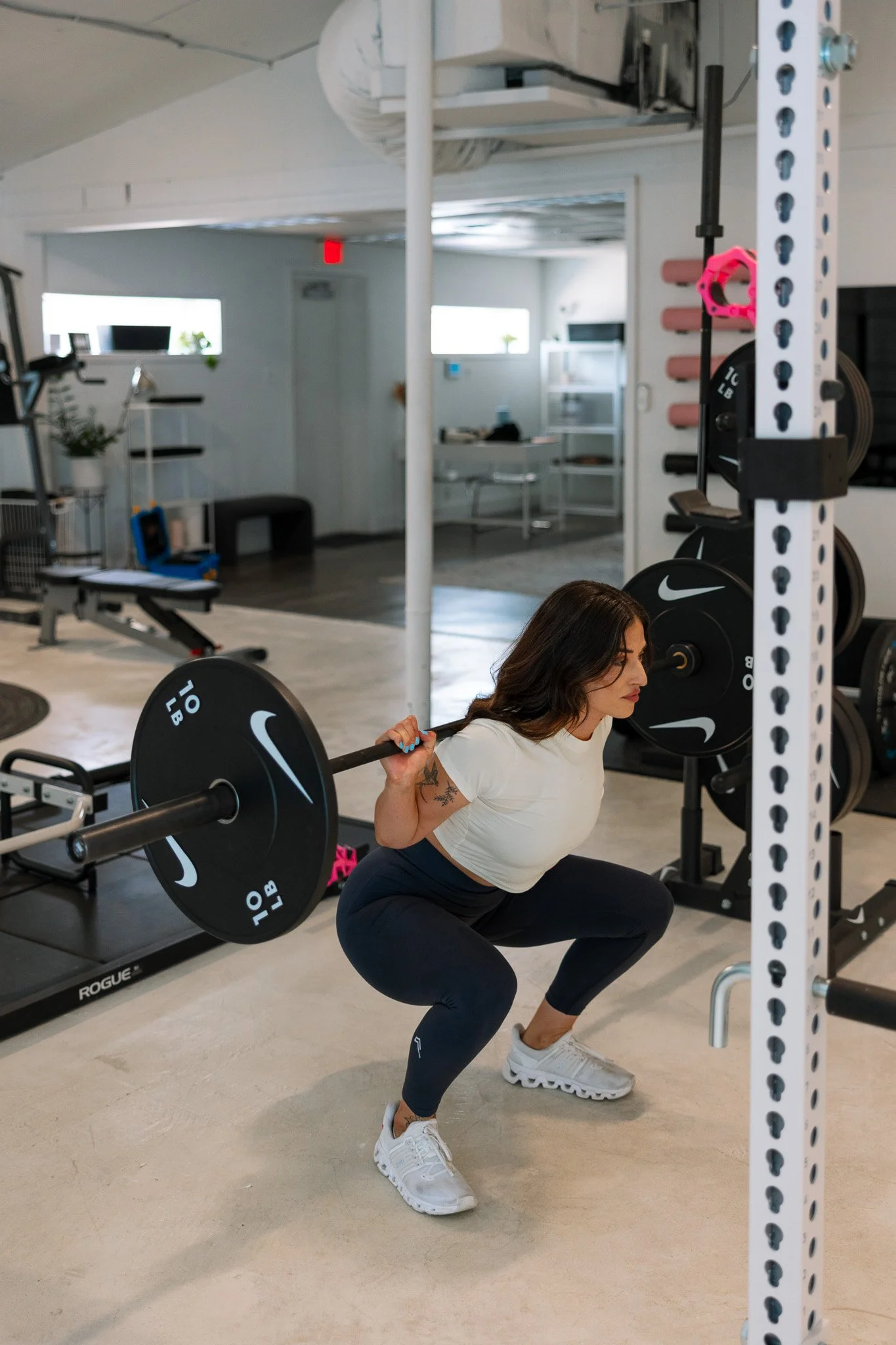
Frequently asked questions.
What can I expect during the assessment and first sessions with you?
I start every client with a comprehensive intake — reviewing your health history, past lifting experience, injuries, and long-term goals. I place a strong emphasis on how you currently move through your joints and use our first 2–3 sessions as an ongoing assessment to see how your body responds to different movement patterns. My programming is rooted in Functional Range Conditioning (FRC), Pain-Free Performance (PPSC), NASM, and Nutrition Coaching Institute principles — ensuring every exercise is loaded safely, intentionally, and pain-free.
I struggle with accountability — how do you support your clients with this?
This is one of my core areas of expertise as a trainer. Most women I work with aren’t struggling with discipline — they’re struggling under the weight of everything else in life. When I first meet a client, we talk about her current priorities, habits, and energy demands. What usually surfaces isn’t a lack of accountability, but burnout from juggling work, family, and personal expectations.
That’s where training becomes a reset, not another demand. My sessions remove the mental load of decision-making — you walk in, and everything from your warm-up to your final set is already mapped out. You don’t have to decide what’s right — you just get to move. This shift allows your nervous system to rest from constant critical thinking and finally focus on connection and action.
Accountability, in my approach, isn’t about pushing harder — it’s about creating a structure that feels achievable and supportive. When the path feels sustainable, consistency naturally follows. That’s my promise: I’ll guide you through a process that honors your effort and builds momentum without burnout.
What time of day should I train?
The Practical Answer…
The best time to train is the time you can consistently honor. It doesn’t need to be perfect or aesthetic — it needs to be repeatable. I always remind my clients: don’t reorganize your entire life to fit an ideal training hour. Instead, weave training into the life you already live.
If that means 10 minutes in the morning and 10 minutes after work — that counts. Movement compounds. I have seen women fall back in love with training not by chasing the “perfect time,” but by consistently showing up in the time they had. When your body begins to regularly experience movement, it starts to crave it, and that desire naturally helps you make more time for it.
Consistency builds connection. Connection builds commitment.
The Physiological Insight…
some evidence suggests women may experience better strength performance, coordination, and joint readiness later in the day — particularly after they’ve eaten and cortisol (our alertness hormone) has naturally declined. Core body temperature and neuromuscular efficiency both tend to peak in the afternoon, which can enhance power output and reduce perceived exertion (Chronobiology International, 2019).
From my own experience — especially during bodybuilding prep years — I noticed stronger, more stable lifts when I trained after two or three meals, rather than fasted in the morning. Your body often performs best when it feels fueled, warm, and supported — not rushed.
Bottom Line:
If morning sessions ground you, honor that. If late afternoons allow you to train with more focus and strength, lean into it. What matters most is that training becomes a rhythm, not a rushed appointment.
